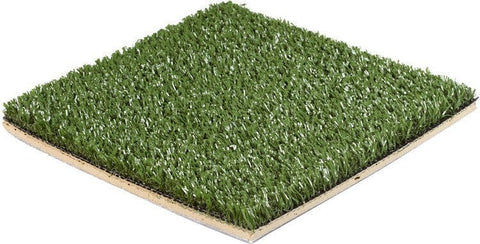Delve Into the Environmental Advantages of Opting for Artificial Lawn Solutions
The fostering of man-made turf options offers a compelling opportunity to attend to pushing environmental difficulties. By dramatically lowering water usage and minimizing the application of damaging chemicals, these alternatives not only promote sustainable landscaping yet additionally shield local ecosystems.
Water Conservation Conveniences
One of the most substantial benefits of synthetic grass is its capacity to save water. In contrast, artificial lawn does not need watering, significantly reducing the overall demand for water resources.
By getting rid of the demand for routine watering, synthetic grass adds to lasting landscape practices and assists alleviate the environmental effect of too much water consumption. The preservation of water extends to the decrease of runoff, which can lead to dirt disintegration and waterway pollution.
Additionally, the installment of synthetic grass enables homeowners and communities to assign water sources much more effectively, focusing on crucial uses such as alcohol consumption water and farming. The change towards synthetic grass not only advertises responsible water usage but also straightens with wider ecological objectives focused on maintaining natural deposits.
As communities significantly focus on sustainability, the water preservation advantages of man-made lawn present an engaging instance for its fostering in household and commercial landscape design jobs.
Lowered Chemical Use
The shift to synthetic grass considerably lowers the reliance on chemical treatments commonly made use of in natural grass upkeep. Standard grass monitoring generally involves the application of chemicals, plant foods, and herbicides to advertise development and control insects. These chemicals can position dangers to human wellness, regional wild animals, and the environment, adding to soil and water contamination.
In contrast, synthetic grass gets rid of the need for these unsafe compounds. Once mounted, it needs very little maintenance, primarily consisting of regular cleansing and occasional infill replenishment. This reduction in chemical use not just benefits the instant setting yet also adds to more comprehensive ecological security. By reducing the launch of artificial substances into the ecological community, synthetic grass promotes healthier soil and water supply.
Furthermore, the lack of chemical drainage connected with synthetic grass installments aids shield local waterways from air pollution, sustaining aquatic life and preserving biodiversity. Phoenix turf companies. As communities progressively focus on sustainable practices, selecting man-made grass provides a practical option that lines up with environmental conservation objectives. Via this change, homeowner can enjoy lush green rooms without endangering environmental health and wellness, paving the means for an extra sustainable future
Lower Carbon Impact

Additionally, the installation of synthetic grass can lead to considerable water conservation. Natural grass call for significant quantities of water for watering, which not just additional reading includes in the carbon impact associated with water removal and treatment however additionally strains neighborhood water resources. On the other hand, synthetic grass needs minimal maintenance, needing no watering, therefore substantially minimizing water usage and its connected energy expenses.
In addition, the durability of man-made turf adds to its reduced carbon effect. With a life-span of up to 15 years or more, the demand for frequent replacements is decreased, leading to much less waste and lower energy usage in production and dealing with traditional lawn options. Generally, fabricated grass offers a lasting choice for ecologically conscious landscaping.
Habitat Preservation
Habitat conservation is an essential factor to consider in the debate over landscape design selections, especially when additional hints comparing synthetic turf to natural turf. All-natural turf lawns often call for substantial upkeep, consisting of using herbicides, fertilizers, and chemicals, which can adversely influence neighborhood communities. These chemicals can leach right into the soil and waterways, damaging indigenous flora and animals and disrupting local environments.
Artificial lawn removes the need for damaging chemicals, consequently securing neighboring wild animals and keeping the honesty of bordering ecosystems. The installation of synthetic grass can lead to the conversion of previous turf areas into more biodiverse landscapes, such as pollinator gardens or native plant locations, which can support neighborhood wildlife.
Ultimately, the transition to synthetic grass not just preserves water and lowers upkeep initiatives yet likewise cultivates an extra unified connection between human tasks and the all-natural atmosphere, promoting habitat preservation in the process.
Long-Term Sustainability
Long-term sustainability is a vital element in examining the advantages of synthetic grass over typical turf lawns. Among the most significant benefits of synthetic grass is its toughness; it can last approximately 15-20 years with very little upkeep, whereas all-natural turf needs regular reseeding and replacement. This long life reduces the demand for continuous resources, such as water, plant foods, and pesticides, which are essential for maintaining a healthy and balanced turf lawn.
Additionally, synthetic grass adds to a decrease in carbon exhausts connected with lawn treatment equipment. Traditional grass commonly require gas-powered mowers, trimmers, and blowers, all of which add to air pollution. Arizona turf. In contrast, synthetic grass gets useful reference rid of the need for such devices, promoting a cleaner environment
Additionally, the manufacturing of synthetic grass significantly uses recycled products, boosting its sustainability account. As suppliers embrace environmentally friendly techniques, the ecological footprint of synthetic grass proceeds to lessen.

Verdict
The fostering of synthetic grass services provides considerable environmental advantages, including substantial water conservation, reduced reliance on hazardous chemicals, and a lower carbon footprint. Additionally, synthetic grass aids in preserving natural environments by decreasing land disruption and promoting long-lasting sustainability through using durable materials. Collectively, these factors highlight the capacity of man-made grass to contribute positively to environmental wellness and supply a feasible alternative to conventional landscape design techniques in a significantly resource-conscious globe.
In contrast, man-made lawn does not require watering, substantially decreasing the overall need for water sources. By reducing the launch of synthetic substances into the community, fabricated grass advertises healthier dirt and water systems.
Moreover, the installation of fabricated turf can result in significant water conservation. In comparison, synthetic lawn needs very little maintenance, needing no watering, thereby dramatically decreasing water usage and its linked energy prices.
